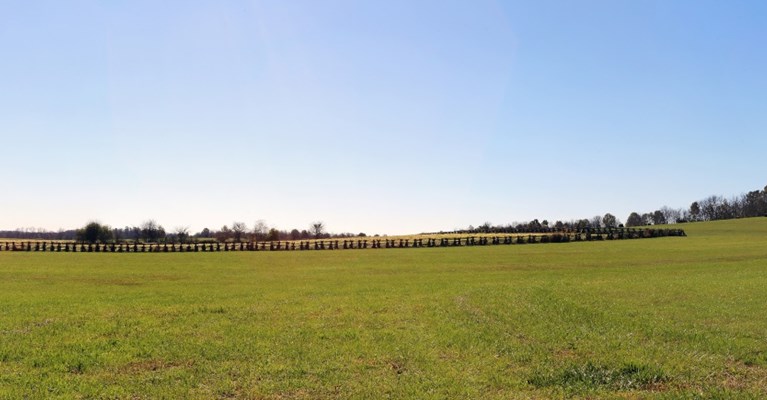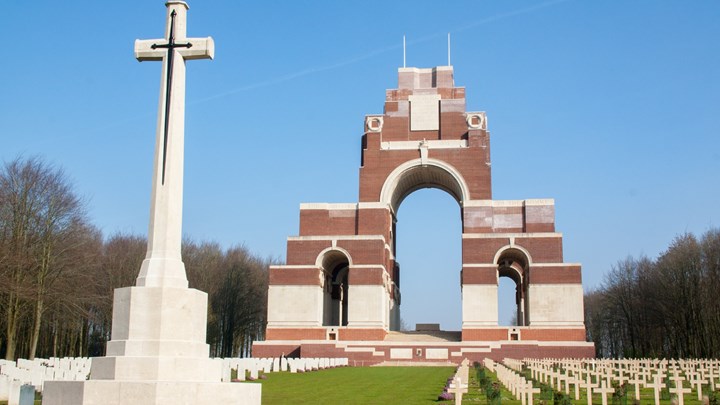Europe’s Great Battlefields

There are numerous battlefields located across Europe which were once the scenes of some of the most significant moments in history. Many of these locations can still be visited today, and whether you want to trace your family history or learn more about those who fought on the frontline, they’re fascinating to see in real life.
Since 2014, countries across the world have been marking the centenary of the First World War 2017 marks 100 years since some of this war’s most infamous events took place, making a visit to these sites all the more poignant. Many of the most significant events in World War II also took place across France and Belgium, so it’s possible to visit different points of history in one trip.
From the Somme to Dunkirk Beach, here at Asda Money we’ve taken a look at some of Europe’s most historical battlefields, and what you can expect to see there today.
The Somme, France
The Battle of the Somme, in 1916, was one of the most infamous battles to take place in the First World War. For more than four months the British and French armies fought against the German forces along a 15-mile front, but were unable to break through the opposition’s lines. In total, over a million people were killed or wounded in this bloody battle.
Today, the Somme battlefields are a popular destination for those interested in history, and people wanting to commemorate the First Word War. Located in the beautiful rural landscape of the Picardy region in Northern France, there are a number of museums, preserved battle sites, monuments and cemeteries for visitors to explore. The famous Thiepval Memorial is a must-see, standing at 45 metres in height, inscribed with the names of casualties who never received an official burial.
To get the full experience of the Somme, it’s recommended to take the Remembrance Circuit. This trail follows the footsteps of the soldiers from Péronne to Albert, where you can see cemeteries, memorials, and many other remnants of the war along the way. You can travel by car, bike or foot, and there are plenty of guided tours to give you an even greater insight into this incredible historical spot.
Located a 90-minute drive from the Channel ports, the Somme battlefields are easy to get to from the UK. For those wanting to stay locally, the nearby town of Albert is just minutes from many of the sites, allowing you to explore and discover at your own pace.

Dunkirk Beach, France
During World War II, from 26th May to 4th June 1940, a mass evacuation of Dunkirk took place when allied troops were forced to retreat from the advancing German army. Thousands of men were left stranded on a 10-mile stretch of beach, from Malo-les-Bains to Bray-Dunes, and there was a race against time to rescue them.
This mass evacuation was code-named Operation Dynamo, and later became known as the Miracle of Dunkirk. It wasn’t just naval ships that came to the rescue of these men, but smaller vessels too, which were referred to as “Little Ships”. Boats of all sizes, from ferries to fishing boats, many manned by civilians, crossed the dangerous waters to help assist in the rescue. Operation Dynamo originally hoped that 30,000 men would be saved, but in total an incredible 338,000 were rescued.
Today, Dunkirk is a busy port town, but you can still visit the historical beach where the rescue mission took place. Head to the East Mole, the famous jetty where 200,000 soldiers were picked up and squeezed onto tiny boats. When the tide is out at Bray-Dunes, you can walk across the sands and see the remains of two Little Ships, the Crested Eagle and the Devonia. The Crested Eagle was carrying 600 men from the Mole when she was bombed, but the captain managed to beach the blazing ship, saving 300 men.
Seaways offer three-day short breaks from Dover to Dunkirk, starting from just £59.00. The trip includes two Dunkirk Passes for the Dunkirk War Museum, Fort des Dunes and Dunkirk Walking Tour. Getting the ferry means you can take your car too, making it easier to see some other sites in Northern France while you’re there.

Ypres Salient, Belgium
The city of Ypres and its surrounding countryside were the settings for several battles of the First World War, collectively known as The Battle of Ypres. This year marks the 100th anniversary of the Third Battle of Ypres, which is also known as the Battle of Passchendaele.
The battle took place from July to November 1917, finally ending when Allied forces took possession of the village of Passchendaele on the outskirts of Ypres. However, by then over 300,000 British and Allied soldiers had been killed or wounded. The battle is famous not only for its casualties, but also for the horrendous mud. After the heaviest rainfall in 30 years fell on the site, the ground was turned into a quagmire, creating horrific conditions for the men fighting here.
Although Ypres and the surrounding area was destroyed during the war, the town has since been rebuilt and is the perfect base from which to explore the battlefields, memorials and cemeteries. The Menin Gate Memorial to the Missing is an important landmark located on the eastern exit of the town, which marks the starting point for one of the main roads that led soldiers to the frontline. Every day at 8pm, traffic is halted through the gate whilst a bugle plays “The Last Post” in remembrance.
To learn more about the First World War and the battles fought in this region, head to the In Flanders Fields Museum, a multi-sensory experience that gives a moving, but fascinating insight into the history of this era. There are many other sites to see around Ypres, so it could also be worth booking onto a tour to make the most of it.
To get to Ypres, it’s best to get the ferry from Dover to Calais and cross the border to Belgium, which takes just over an hour. There’s also a daily overnight ferry from Hull to Zeebrugge, which is an hour’s drive from Ypres. Prices start from £129 each way for two adults with a car, sharing a standard inside cabin.
Video sourced from the Royal British Legion
Whichever battle site you visit, don’t forget to collect your travel money first. You’ll most likely need the Euro, but Asda Money stock over 50 currencies, and can usually order it in for you if not.
Make sure you have comprehensive travel insurance before you depart, too. Asda Money offer a range of policies with several levels of cover to choose from, and kids go free.
The above figures are provided for indicative purposes only, and are based on the exchange rate correct as of 23/10/2017